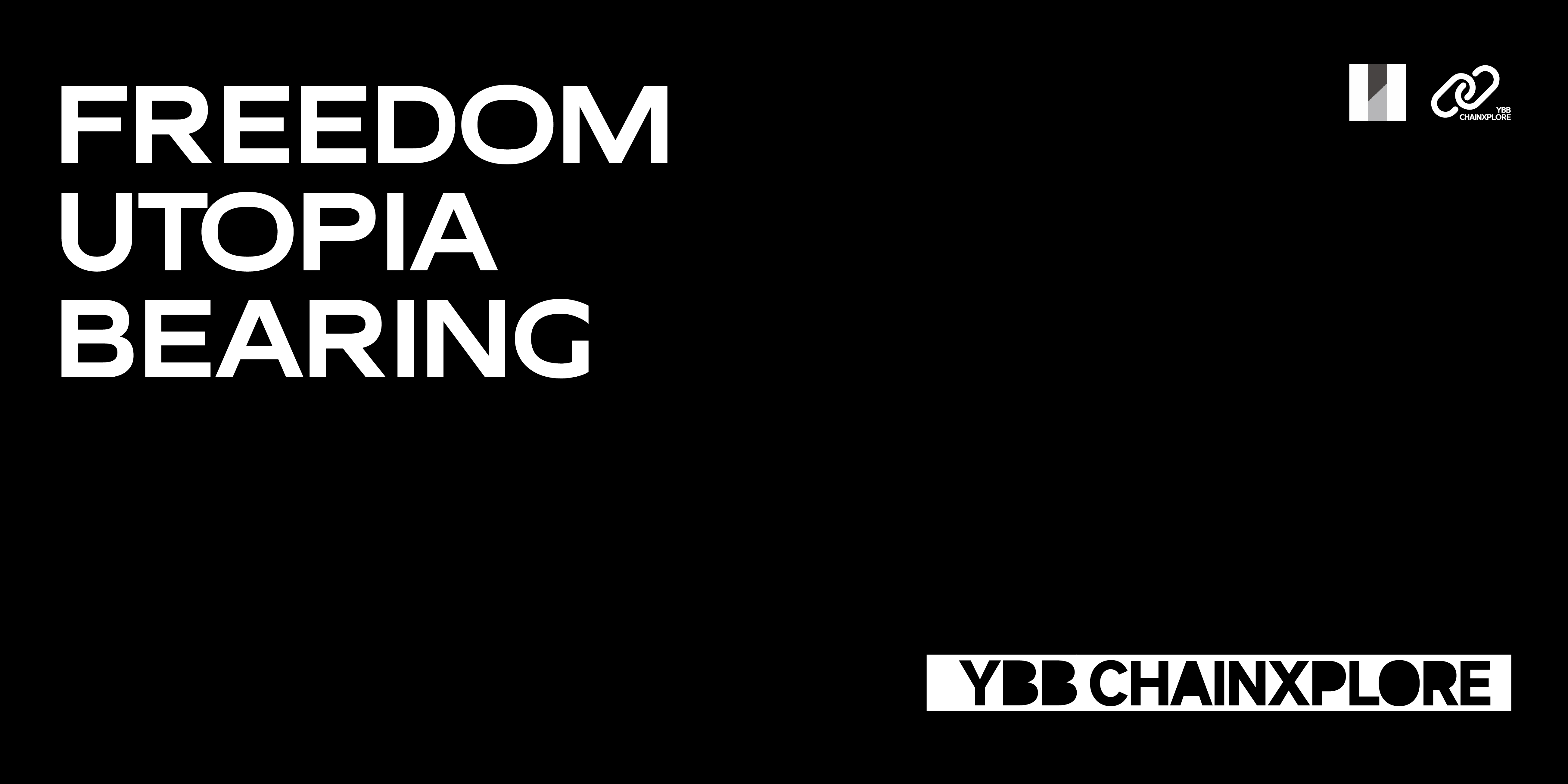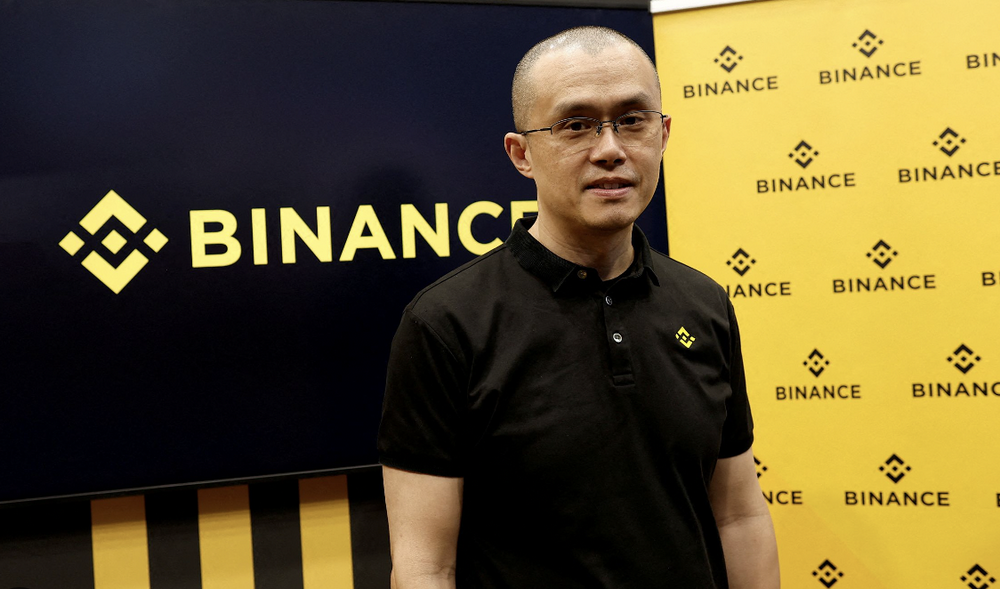Crypto Kernel: Freedom, Carrier and Utopia
Crypto Kernel: Freedom, Carrier, and Utopia 
Author : Solaire, YBB Capital
Introduction
In 2014, Gavin Wood, co-founder of Ethereum, proposed a concept from the perspective of decentralization and democratization of the existing Internet. In this world, the services we use are no longer provided and controlled by a single company, but are maintained and contributed by global users through blockchain technology. This approach gives each participant equal power, which he calls the next generation Internet, or Web3.
In the 21st year of the blockchain frenzy, the concept of Web3 was reignited, but at that time the definition of Web3 was very vague, like the emperor’s new clothes. At that time, everyone was talking about Web3, but no one knew where Web3 was. Until today in 2023, Web3 is still in the early stages of exploration, but the definition is now clearer, that is, to subvert the data monopoly of traditional Internet giants through the characteristics of blockchain, but the industry still has a lot of differences in development categories and forms. The true form of Web3 has not yet been fully revealed. It may go through many stages and evolution processes. The process of leading to a new form of the Internet is quite bumpy, and the content discussed in this article is based on my subjective perspective on the current industry situation to discuss what is the significance of Web3 and how Web3 should develop.
- Decoding the Ethscription protocol for creating NFTs on Ethereum using transaction data
- Interpretation of Bitmap Theory
- Conversation with Maverick: Two years of hard work have brought not only DEX.
Born Free: Web3
Throughout history, human pursuit of freedom began with citizenship and political participation in classical times, explored individual rights and religious freedom during the Enlightenment, developed to the freedom market and property rights concept of modern liberalism, and the public ownership and classless ideology of socialism. These ideological differences produced under different times and cultural backgrounds still profoundly affect us today. In the confrontation with centralization in some industries or systems today, new paths will also be generated to explore freedom and produce different ideological differences.
Nowadays, traditional Internet giants such as Google, Facebook, Amazon, etc., their control of personal data largely constitutes their business model. They collect, store and analyze users’ personal information to provide more personalized services and generate revenue through advertising and other business activities. However, this control of personal data has caused a series of problems, including privacy, data security, and data ownership. Against this background, the next generation Internet proposed by Gavin Wood gave blockchain entrepreneurs ideas to combine traditional Internet with blockchain to create the next generation Internet, which is free, democratic, and decentralized, created and maintained by all participating users. At the same time, the relationship between interests has been transformed from the traditional Internet company providing services to users, and users providing information to them to a model of jointly building and spreading benefits to all participants.
This new internet model is called Web3, and its key features are:
- Decentralization: Web3 eliminates a single centralized authority, using blockchain technology and decentralized protocols to achieve more reliable and secure data exchange and storage through a distributed network.
- User control and data ownership: Web3 gives users direct control over their personal data, allowing them to choose when to share, store, and manage their own data, protecting personal privacy and data security.
- Trustlessness and transparency: Using blockchain technology, Web3 achieves trustless transactions and contract execution, providing higher transparency and verifiability.
- Asset ownership and exchange: Web3 supports cryptocurrency and digital asset management, allowing users to engage in decentralized value exchange and asset management.
Overall, Web3 aims to establish a more open, free, fair, and democratic internet, enabling individuals to better control their digital identity and data, and achieve more secure, private, and trusted online interactions.
Web3’s grand vision seems no less ambitious than Bitcoin’s vision of changing traditional finance, but disappointingly, most Web3 projects’ performance in non-financial applications has been unsatisfactory, raising questions such as whether using blockchain in non-financial applications makes sense, and how we should integrate with the traditional internet industry. Should blockchain continue to embody financial attributes? Quoting Vitalik Buterin’s perspective in “Where to use a blockchain in non-financial applications?”, we should steer clear of both blockchain universalism “blockchain everywhere” and blockchain minimalism “blockchain minimalist.” I personally understand this sentence as whether the project has the necessity to apply blockchain technology. The rest of this article will explore the above issues around some mainstream use cases in non-financial fields.
Web3’s Framework Challenges
Pursuing freedom or starting from the practical is a complex issue. Initially, blockchain was designed to solve financial centralization, with a distributed architecture, consensus mechanism, and data structure that inevitably make the entire network very inefficient. Unlike Web2, which is based on a centralized server model, blockchain needs to verify transactions and ensure that every node in the network is updated before a result can be established. Although later blockchain practitioners have made countless efforts to increase the possibility of blockchain, from establishing Ethereum, building the Ethereum Virtual Machine (EVM) to enable smart contracts to run on it, to achieve the possibility of application operation, in terms of scalability, around the shortcomings of EVM, doing second layer, side chain, sharding or changing consensus mechanism to increase some innovation to do a new public chain. All public chain-related practitioners are working hard to solve the impossible triangle of blockchain, namely Decentralization, Security, and Scalability.
I do not deny that these efforts are useless. On the contrary, promoting the scalability development of the blockchain is a meaningful thing. However, under the current circumstances, we must admit a fact that we have been developing within the framework constructed by Satoshi Nakamoto, and we still do not have the ability to make applications as Web2. Decentralization and security of the blockchain have always been higher than scalability. Even if the impossible triangle cannot be broken, the essence of the blockchain in architecture is still a giant linear table. This is the invisible framework of the blockchain. The design itself is meant to eliminate the risk between peers and reduce the cost of account friction. Building programs on the blockchain for Web3 applications today is as limiting and inefficient as building an app in Excel. It is not in line with the meaning of Web3 to detach from the framework, but accepting some inevitable inefficiencies and complexities is necessary if we follow the framework.
Therefore, the current idea for app application projects is to rebuild a Web2 app of a certain type through a compromise. For example, social or video applications, combined with on-chain applications or separating assets and user data on the chain, ultimately resulting in some rudimentary, inefficient, and blank Web3 products. For most people, the social platform they need is one with enough resources to browse and interact, not a complicated task platform. The video platform they need should have user-generated content and a rich library of movies and TV shows. Current Web3 video platforms like to tie users up through token models rather than focusing on content. These products prioritize “blockchain everywhere” as the underlying logic and take Gavin Wood’s vision of Web3 as the primary goal, putting this ideal above user value and high production efficiency. This is putting ideals above reality. Throughout the history of human industrial product development, it has always been a process of seeking balance. All products that are ahead of their time or have misplaced priorities end up as failures. Even if they meet the needs of a small group of people, they are difficult to develop because products with a large enough user base can be favored by the market. With enough funds and strong user demand, the industry can develop rapidly. This is a positive relationship and a simple truth.
Currently, the situation of application projects is somewhat inconsistent, and even without clear purpose, they are simply for the sake of going on the chain. Personally, I think that at this stage, it should be more to help or guide traditional gaming companies and Web2 companies to go on the chain. By changing the status quo of such products through their high-quality services and content, blockchain gives them more economic benefits and possibilities, and Web2’s strength will bring more users and developers to promote the construction of Web3 applications. This is a win-win mode.
Utopian SSI
Self-Sovereign Identity (SSI) is a concept that advocates for individuals or entities to have complete control and management of their digital identity. Its core idea is that everyone should have their own identity, just like they have their own personal belongings, rather than relying on governments, companies, or any centralized third-party entities to confirm or manage their identities.
In this model, individuals can directly own and control their identity data, and decide when, how, and with whom to share this data. This data may include various identity information such as name, address, date of birth, passport number, as well as more complex data such as education records, bank records, or medical records.
The concept of self-sovereign identity has come close to completion with the use of blockchain technology. In blockchain, we call SSI a Decentralized Identifier (DID), which is a new type of identifier that provides persistent, verifiable, and decentralized identity verification in the digital world. The main goal of DID is to provide entities (such as individuals, organizations, devices, etc.) with a way to control their own online identities without relying on any centralized registration authority.
Technically, a DID is a string with a specific format, usually associated with blockchain or other distributed ledger technology (DLT). DIDs allow entities to make identity claims directly on the network without the need for intermediaries (such as social media platforms or email providers) to verify them.
A key feature of DIDs is that they are controlled by the entities themselves, rather than being issued by third parties. Entities can create, update, and revoke their own DIDs without the need for any centralized registration authority.
DID is a key tool for implementing the SSI model, which allows entities to own and control their own identities, rather than relying on centralized identity providers.
For example, a DID may look like this: “did:example:123456789abcdefghi”. In this example, “did” is the fixed identifier element that indicates that this is a DID. “example” is the so-called DID method, which explains how this DID is created and managed on a specific blockchain or DLT. “123456789abcdefghi” is the specific identifier part of the DID, which is unique in the associated blockchain or DLT.
Self-sovereign identity is the core of Web3, and at the same time, it is a concept with a strong utopian meaning. “Utopia” is a word derived from Greek, composed of “ου” (non) and “τ ό πο ς” (place), meaning “nowhere.” This word first appeared in Thomas More’s work “Utopia” to describe an ideal and perfect society or community. I think the words “utopia” and “DID” match very well. It is not only a hammer that breaks the barrier from Web2 to Web3, but also a hammer that does not exist, as described above, “the concept of self-sovereign identity has come close to completion with the use of blockchain technology,” why use the phrase “come close to completion”?
Just like the blockchain triangle problem, DID also has its own triangle problem: “privacy”, “decentralization”, and “Sybil resistance”. For example, Bitcoin, Ethereum, and many other cryptocurrency systems do not centralize the process of recording user identities, and users do not need to provide any personal information when creating their own digital wallet addresses. However, this approach has led to a problem: projects that consider these addresses as unique identity identifiers are susceptible to Sybil attacks.
To avoid such attacks, certain crypto projects require users to undergo additional customer identification verification (KYC) procedures, such as submitting government-issued identification. This does effectively prevent Sybil attacks, but it also means that users need to sacrifice some privacy, and this verification method does not comply with the decentralized spirit of the blockchain, as it relies on other non-decentralized identity verification methods.
Proving that a person is unique in a network while ensuring privacy and decentralization is difficult. Currently, the mainstream method is to confirm through the relationship network by the social graph or through the iris scan of the orb. However, no matter which method is used, there are logical problems. For example, the social graph only needs to update the relationship network to update a new identity, while the Orb iris scan of Worldcoin claims to only save the hash data of the iris, but this centralized method cannot guarantee that there will be no deliberate wrongdoing in multiple links. Reality always has some dystopian color, but I think the application of blockchain technology in DID is necessary, and DID can also be achieved by balancing between the three points of the triangle. Perhaps introducing SBT (Soul Binding Token) or using local biometrics on mobile devices can find a suitable balance point among the three points of the triangle.
Web3 Hosting Decentralized Storage
The main features of decentralized storage currently include:
- Distributed: In a decentralized storage system, data is divided into multiple parts and distributed across many different nodes (usually personal computers) around the world, rather than being stored on a single central server.
- Security: Because data is distributed across multiple nodes, decentralized storage systems are more secure and less susceptible to single-point attacks. At the same time, many decentralized storage systems also use encryption technology to protect data security.
3. Fault tolerance : As data is copied and stored on multiple nodes, even if one node fails, copies on other nodes can still provide data, thus improving system availability.
4. Transparency : Many decentralized storage systems are based on blockchain technology, which means that all transactions are public and can be viewed by anyone, increasing transparency.
5. Resistance to censorship : Decentralized storage systems have strong resistance to censorship due to distributed storage and often encrypted protection, even if governments or other entities attempt to block or censor data, it can still be accessed and retrieved.
6. Persistence : Because data is copied and stored on many nodes around the world, decentralized storage has high persistence, even if some nodes fail or disappear, data can still be retrieved from other nodes.
Decentralized storage is an earlier track in non-financial applications of blockchain. As a key container for Web3 data, decentralized storage has always had two critical pain points, high barriers to entry and weak performance, which somewhat contradict user value. However, I believe that decentralized storage is necessary for using blockchain technology, and there are currently some projects that are continuing to push its limits, such as ETH Storage and Arweave. Whether it is a web3 app or a future Metaverse, a sufficiently decentralized container is needed to host data and front-end. I am still optimistic about the future of this technology, and the current direction is relatively simple: continue to improve speed and reduce gas fees, upgrade storage space and content that can be stored to meet user value. I believe that the characteristics of decentralized storage will be more attractive than traditional centralized storage.
Bitcoin
In summary, I have proposed three relatively critical non-financial use cases for Web3. It can be seen that the entire concept of Web3 is still in its early stages, and they are limited by certain issues, inevitably requiring some detours.
When Gavin Wood proposed the concept of the next generation of the internet, he did not consider the inefficiencies and violations of business principles that come with blockchain. This has led to the curious phenomenon of practitioners building roofs before building houses. I share Vitalik Buterin’s view that blockchain is neither omnipotent nor can it only be used in a minimalistic way. The application of every technology should consider the current situation and have a clear purpose. An impetuous mentality will only lead to faster failure. If Web3 is to have a spiritual benchmark, Bitcoin may be quite fitting. Every line of code designed by Satoshi Nakamoto is not complicated, but each has a clear purpose. Bitcoin belongs to no one and belongs to everyone. Its subversion of traditional industries and inspiration for subsequent practitioners still has a profound impact on us 15 years later.
“Why buy bitcoin” is YBB’s slogan, and the above is my answer. I hope that one day when someone asks me why I am all in on Web3, I can also have my answer. My expectation of it is to also subvert tradition, break monopolies, and be a technology that belongs to the people. No one can stop the surging trend. I hope that all practitioners will encourage each other.
We will continue to update Blocking; if you have any questions or suggestions, please contact us!
Was this article helpful?
93 out of 132 found this helpful
Related articles
- Increasing the validator balance limit from 32ETH to 2048ETH: Will it cause validator centralization?
- New action from Cyber Administration of China: Algorithm filing for every AIGC platform is at stake
- Do you really understand Uniswap v4?
- Vitalik: In-depth Understanding of Cross-L2 Reading – What are the Cross-Chain Proof Solutions
- Why DeFi is Broken: The Importance of Non-Oracle Protocols
- CoinEx fined $1.7 million and reached a settlement with the New York State Attorney General’s Office (NYAG)
- Evolution of Uniswap: Opportunities and Impacts of V4






